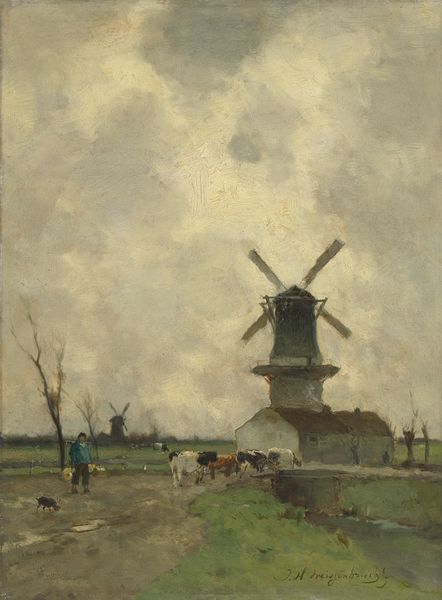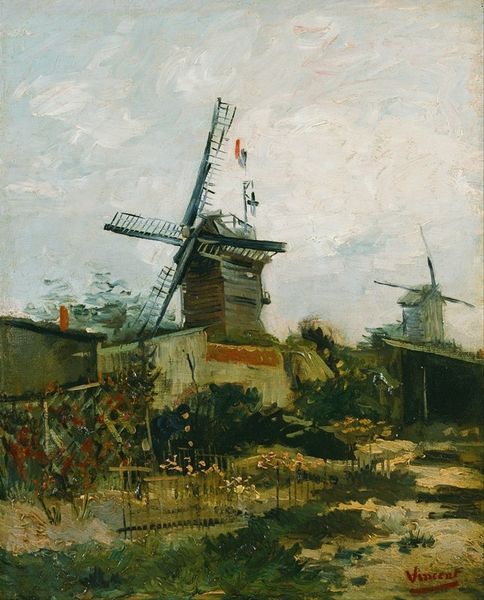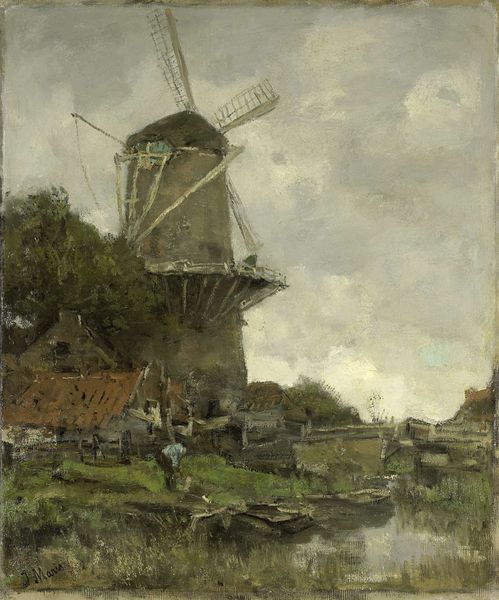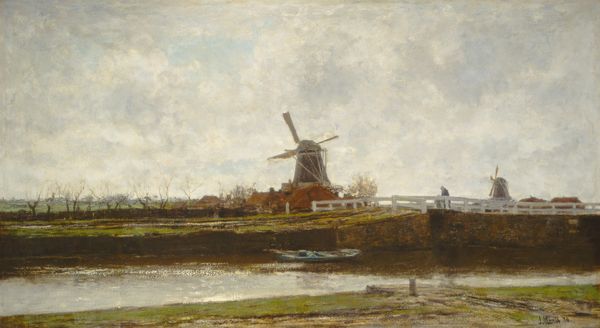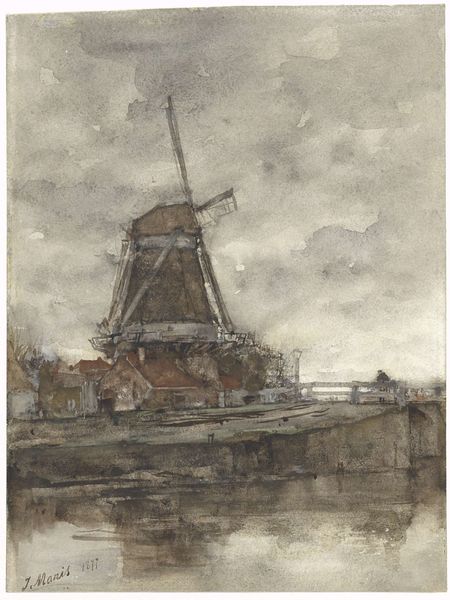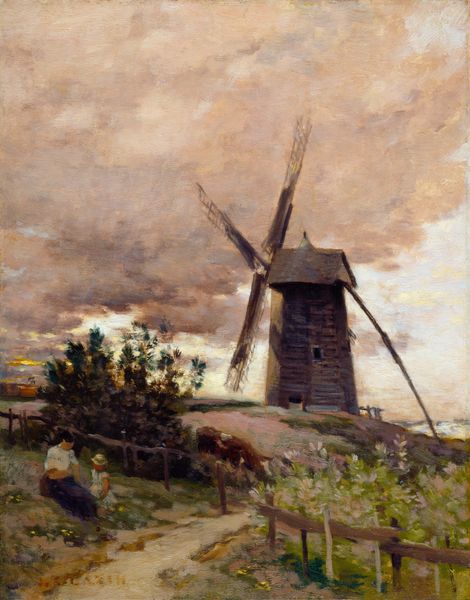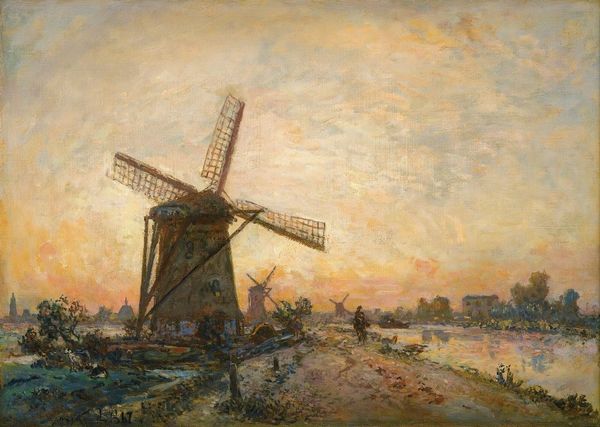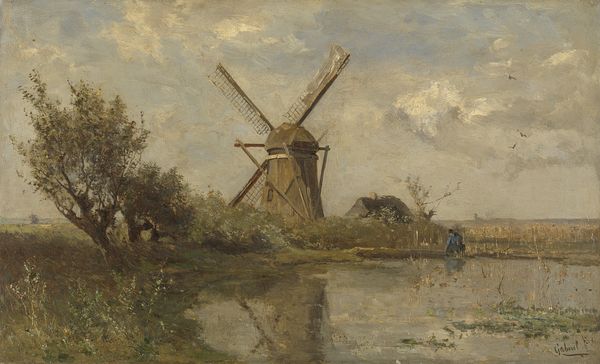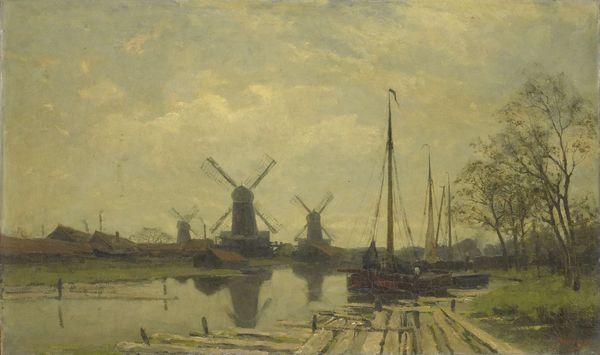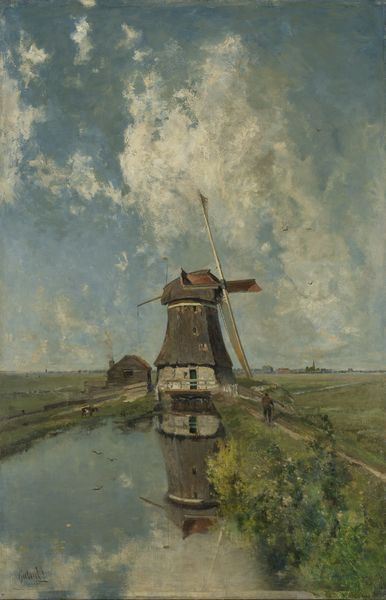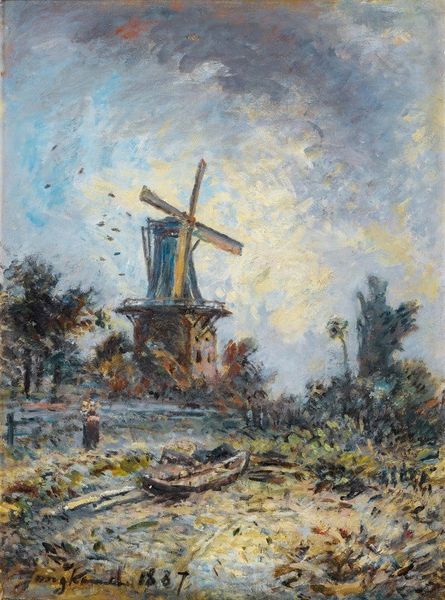
plein-air, oil-paint, impasto
#
dutch-golden-age
#
plein-air
#
oil-paint
#
landscape
#
oil painting
#
impasto
#
realism
Dimensions: height 49.5 cm, width 40.6 cm, depth 11.7 cm
Copyright: Rijks Museum: Open Domain
Curator: Welcome. We're standing before Jacob Maris's "Molen bij Maanlicht," painted around 1899. It's an oil on panel, currently residing here at the Rijksmuseum. Editor: My first thought? Hauntingly beautiful. The moonlight is almost aggressively diffused, blurring the line between the mill and the sky. It feels like a memory fading. Curator: Indeed. Maris employs a somber palette, predominantly grays and blues, creating a powerful sense of atmosphere. The impasto technique—thick layers of paint—adds to the textural richness. Notice how it evokes a palpable sense of the humid air. Editor: The lone figure adds to that solitary feeling. Are they approaching or leaving the windmill? There’s something wonderfully ambiguous about it. The light seems to be leading them somewhere or perhaps trapping them between shadow and pale illumination. It stirs feelings that touch on the loneliness of human experience. Curator: Precisely! This piece showcases characteristics reminiscent of the Hague School, where landscape paintings often conveyed mood and atmosphere, rather than precise depictions. Maris has masterfully orchestrated light and shadow to lead our eye to that focal point: the figure, and further still to the stark, unadorned architectural features of the structure itself. Editor: You're so right. There is nothing nostalgic about it. While I do agree it certainly possesses an old world quality in its overall feeling. The windmill, though static, pulsates with the suggestion of energy as though a hidden engine that runs on pure romantic imagination, and human endeavor is about to begin its next cycle of existence in that location again! It's an almost timeless and placeless dreamscape. Curator: In totality, it underscores a rather unique perspective for its period through its subdued hues, and its subtle textural play it invites extended contemplation, rather than merely depicting pastoral ideals. Editor: Maris captures, beyond mere likeness, some intangible mood—that’s why his artwork resonates, offering us a quiet reflection on the interplay of light, shadow, and enduring structure.
Comments
No comments
Be the first to comment and join the conversation on the ultimate creative platform.
